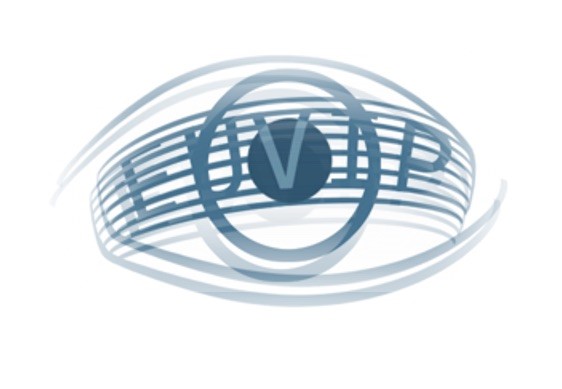

Session 1 : Image and video quality assessment
Organizers: Karen Egiazarian, Tampere University, Finland, Vladimir Lukin, National Aerospace University, Ukraine
Brief description of the session: Image and video quality assessment plays an important role in a broad range of applications ranging from image enhancement (denoising, sharpening, super-resolution, etc) to image compression, image indexing, and machine vision. This special session focuses on the design and usage of metrics of image and video visual quality in image processing, as well as on the design of specialized databases for verification of such metrics.
Session 2 : Processing and analysis of signals on 3D graphs
Organizers : Anass Nouri (Université Ibn Tofail, anass.nouri@uit.ac.ma), Olivier Lézoray (Normandie Université, olivier.lezoray@unicaen.fr), Florent Autrusseau (Polytech Nantes, florent.autrusseau@univ-nantes.fr)
Brief description of the session: Nowadays, 3D data can be found in many different situations. Initially restricted to 3D images, mostly encountered in the medical domain, 3D data can now be created or acquired in various ways: tomography, 3D medical scanners, 3D laser scanners, reconstruction from 2D images by photogrammetry, LIDAR point clouds, etc. These 3D data can be obtained in many different forms among which we can give the most common: 3D images, 3D meshes, and 3D point clouds. Although apparently different from one another, all these different forms of 3D data often require similar processing and analysis techniques: restoration, missing value completion, clustering, learning, and inference, to quote a few. With similar processing objectives that can operate on heterogeneous types of data, it is natural to seek a common representation of digital data that can ease the unification of information processing. One way to address this challenge of data representation is to consider not only individual entities, but also relationships between them, and to consider graphs. Hence, signal processing on graphs emerged, this research topic is on the verge of various related fields: signal processing, graph theory, and machine learning (eventually deep). The variety of different 3D data that can be represented as graphs has developed the interest in graph signal processing in many emerging domains, in particular for brain networks in computational neuroimaging, 3D color point clouds, and meshes in computer vision. The aim of this special session is to present the latest advances in the field of processing and analysis of signals on 3D graphs.
Session 3 : Deep learning for Immersive Technologies
Organizers : Sid Ahmed Fezza, National Institute of Telecommunications and ICT (INTTIC), Algeria; Wassim Hamidouche, INSA Rennes, France; Mylène C.Q. Farias, University of Brasília (UnB), Brazil.
Brief description of the session: Over the last few years, with the aim to bring a more realistic visual experience to consumers, immersive technologies have been gaining interest at a fast pace. As a result, new visual contents have emerged, such as 360-degree, light fields, point cloud, ultra-high definition, high dynamic range, etc. However, these immersive imaging technologies face many challenges, from capture to display. On the other side, recently, deep learning in multimedia processing has been widely adopted due to its impressive performance. New advancements in deep learning are continually being made to address even more complex and challenging tasks.
In this special session, we put the focus on research works aimed at extending and improving the use of deep learning architectures for immersive imaging technologies.
Topics of interest in this special session include deep learning-based approaches for (but are not limited to):
- Efficient processing of 360-degree content, light fields, point clouds,
volumetric video.
- Saliency prediction in 360-degree content, light fields, point clouds,
volumetric video
- Quality assessment of 360-degree content, light fields, point clouds,
volumetric video.
Session 4 : Multimedia Forensics and Biometric Security: Recent
Advances
Organizers : Somaya Al-Maadeed, Department of Computer Science and Engineering, Qatar University, Qatar; s_alali@qu.edu.qa, Kiran Raja, Department of Computer Science, Norwegian University of Science and Technology, Norway; kiran.raja@ntnu.no, Ahmed Bouridane, School of Computing, Engineering and Information Sciences, Northumbria University Newcastle, UK; Ahmed.Bouridane@unn.ac.uk
Brief description of the session: Criminals inevitably leave clues to their identity at the crime scene. Forensic image analysis is an increasingly important part of most evidential examinations, e.g., documents, handwriting, biometric traits, and these types of evidence are now considered by investigation agencies everywhere. In addition, the ease with which digital multimedia data (image, video, and audio) sharing over the internet and social media networks bring new challenges for their authenticity, forgery, etc.
As a result, the field of security has witnessed explosive growth during the last years, as phenomenal advances in both research and applications have been made. As a developer, one needs to be able to quickly develop sophisticated imaging applications that allow for accurate extraction of precious information from image data for identification and recognition purposes. In addition, in many instances, the solutions require the sharing of evidential information securely and in real (near) time especially for intelligence purposes so that crimes can be processed and linked while they are still “hot”. This is particularly true for any type of biometric and forensic image/video data.
The objective of this special session is to gather high-quality research efforts that address the challenges of the emerging area of digital media-based evidence for forensic science and crime prevention applications with a view to providing the readers (researchers and forensic scientists) with an overview of the state of the art in this field. Possible topics for papers submitted to this special issue include, but are not limited to:
- Scene of crime evidence
- Recent advances in automatic analysis of scene of crime imagery and
video
- Forensic image and video
- Abnormal Behaviour from Video
- Digital media security for forensic science (image, video and
audio)
- Image forensics from CCTV and surveillance video
- Sensor forensics
- Perceptual approaches for data hiding
- Applications of forensic imaging and video
- Masked
face recognition
- Contactless
biometrics
The papers should be submitted through the regular submission system and will undergo the same review process as regular papers.
Special Sessions Chairs:


created with
Website Builder Software .